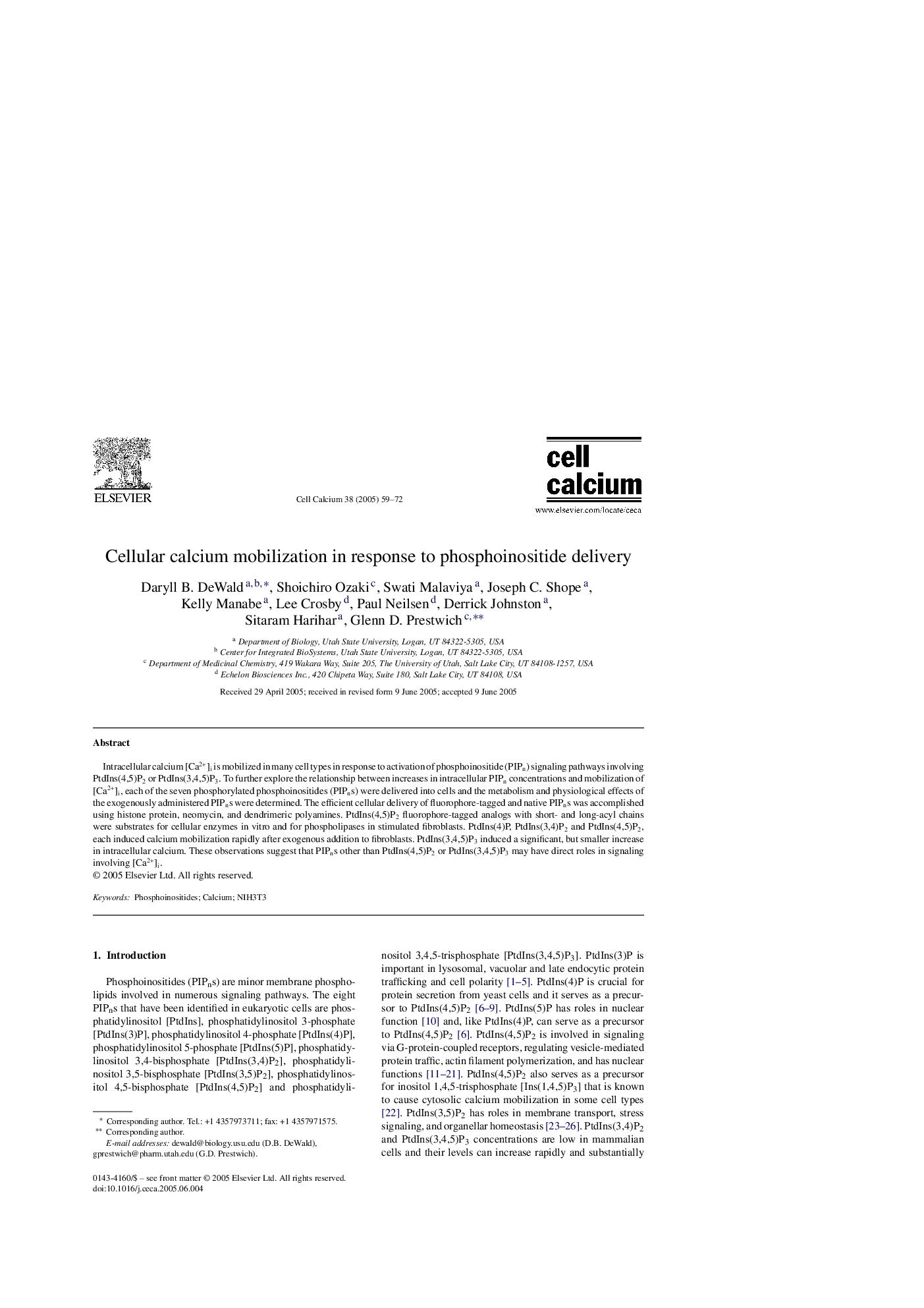| Article ID | Journal | Published Year | Pages | File Type |
|---|---|---|---|---|
| 10926554 | Cell Calcium | 2005 | 14 Pages |
Abstract
Intracellular calcium [Ca2+]i is mobilized in many cell types in response to activation of phosphoinositide (PIPn) signaling pathways involving PtdIns(4,5)P2 or PtdIns(3,4,5)P3. To further explore the relationship between increases in intracellular PIPn concentrations and mobilization of [Ca2+]i, each of the seven phosphorylated phosphoinositides (PIPns) were delivered into cells and the metabolism and physiological effects of the exogenously administered PIPns were determined. The efficient cellular delivery of fluorophore-tagged and native PIPns was accomplished using histone protein, neomycin, and dendrimeric polyamines. PtdIns(4,5)P2 fluorophore-tagged analogs with short- and long-acyl chains were substrates for cellular enzymes in vitro and for phospholipases in stimulated fibroblasts. PtdIns(4)P, PtdIns(3,4)P2 and PtdIns(4,5)P2, each induced calcium mobilization rapidly after exogenous addition to fibroblasts. PtdIns(3,4,5)P3 induced a significant, but smaller increase in intracellular calcium. These observations suggest that PIPns other than PtdIns(4,5)P2 or PtdIns(3,4,5)P3 may have direct roles in signaling involving [Ca2+]i.
Keywords
Related Topics
Life Sciences
Biochemistry, Genetics and Molecular Biology
Cell Biology
Authors
Daryll B. DeWald, Shoichiro Ozaki, Swati Malaviya, Joseph C. Shope, Kelly Manabe, Lee Crosby, Paul Neilsen, Derrick Johnston, Sitaram Harihar, Glenn D. Prestwich,
